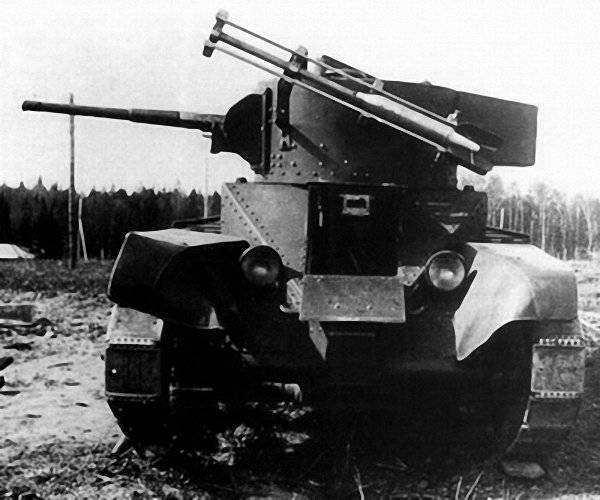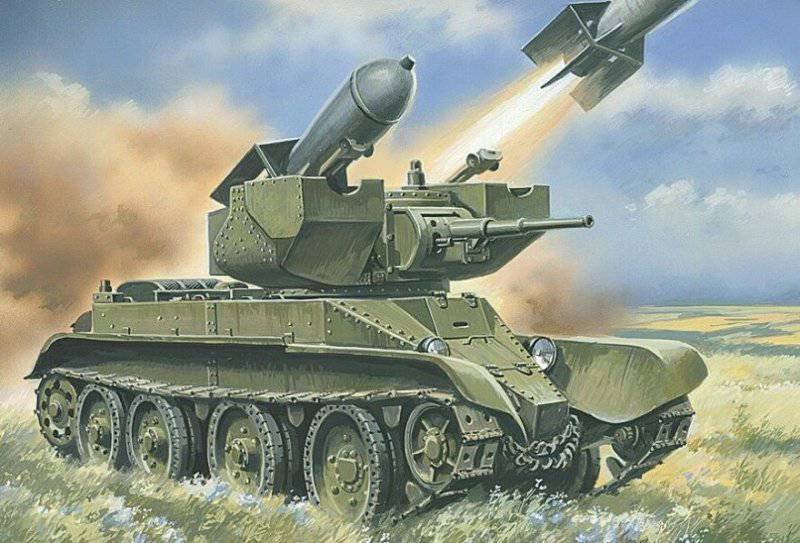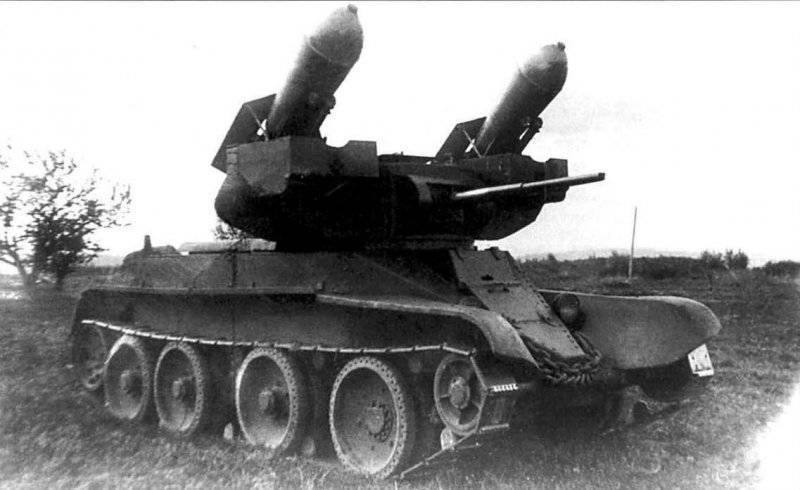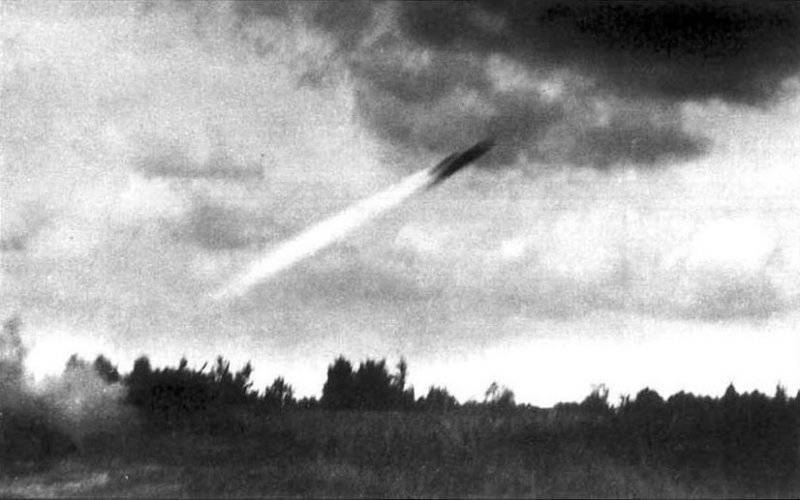Unusual tanks of Russia and the USSR. The first USSR missile tanks
In the 30s of the twentieth century, many developed countries conducted experiments on installation on Tanks and armored vehicles of various types of weapons. Heavy mortars, mortars, howitzers and mortars were installed on combat vehicles. It remains to try to install missile weapons on them. The Soviet Union, being one of the powerful powers, whose government understood the inevitability of an imminent war, did not remain aloof from developments in this very promising direction that seemed then. The first missile firing at a distance of up to 1500 meters, which were successful, was carried out in 1932 at the Kuzminki firing range, according to their results, a decision was made to deploy this weapons on the tanks.
In the process of creating the first serial Soviet tanks, engineers looked for opportunities to increase the firepower of both future and existing models adopted by the Red Army. Weapons that allowed the tank to successfully fight with heavy and medium tanks of the enemy, with heavily protected and reinforced firing points (pillboxes and high-explosive equipment), were not yet installed on combat vehicles. One such opportunity seemed to be the installation on an armored vehicle, in addition to standard, various additional weapons, such as missiles.
The first project aimed at implementing this idea was the RBT-5 project. The beginning of work on the project can be considered the task set in October 1933 by the head of the UMM RKKA A.I. Khalep military engineer Lebedev, on the creation of an installation for placing two 250-kg missiles or, as they were then called, tank torpedoes on the light tank BT-5. At the end of 1933, the first prototypes of launchers for tank torpedoes were manufactured at factory # 37. One of them was designed to launch only one torpedo, the second, which turned out to be more successful, was paired; for a short time, but already at the Kharkov steam locomotive plant, it was installed on a regular, serial BT-5 tank. The launcher was placed on a tank turret, had the greatest vertical guidance angle up to +48 degrees and included one feathered torpedo mounted on a rail on each side. The rocket length was 1805 mm, the largest (warhead) diameter was 420 mm. The mass of the explosive (explosive) located in the front of the torpedo was 130 kg, in the tail there was fuel - 13,7 kg. The standard armament of the BT-5 remained the same: a 45mm 20K cannon and a 7.62mm DT-29 machine gun. To carry out firing, sighting shots were first performed from a standard turret gun, then, using a complex system of calculations and corrections, torpedoes were aimed. Electric fuses were used to ignite the propellant. As an explosive fuse on tank torpedoes, a conventional fuse from aviation bombs, which in the stowed position was protected from accidental activation when hit by bullets and shrapnel with a small armor cap. But according to the test results, given the short range of the rocket, its extreme vulnerability from bullets and fragments, the formation of a large unmasking cloud of smoke and dust after the shot, it was decided to stop further work on this project.

However, the developments obtained during the creation of the RBT-5 were further tried to be applied in the next project to install a high-explosive 5-mm rocket (RS) on the same BT-132. Work in this direction has been going on since the beginning of 1935, the first samples were designed at the Rocket Research Institute by engineer VI. Alexandrov and made in April of the same year. The installation consisted of two guide rails, on which the RS was fastened, and was installed on the left side of the tank tower. Vertical pickup angles were fixed, 0 and 20 degrees. Preparations for firing a PCA were also carried out by preliminary adjustment of a tank gun. The first tests were carried out on 28 on April 1935, three shots were fired with missiles, the flight range was more than 2000 meters. However, due to the increased fire hazard and the risk of fire, the tests were suspended. In the following tests, which took place on May 22, additional fire safety measures were taken, however, other serious flaws were revealed, in particular, when a shot was fired (only one shot was fired that day), the air cleaner's protective cover was torn off. After a minor design fix and damage repair, 26 tests were resumed in May and were generally successful.
According to the results of the latest tests, the commission concluded that the installation of missile weapons on the tank is a promising direction in terms of increasing firepower, and decided to continue the work that was carried out until the end of 1936 of the year. As a result, two more advanced installations for firing rockets were designed, there were also attempts to design a tank based on the BT-7 with a special turret, the main weapon of which was to be rocket weapons. However, none of the subsequent projects was accepted for consideration, and all further work was folded. Only in the middle of the 50-s of the 20-th century, the fate of most of the projects on equipping the tank with rocket weapons ended only with prototypes.



Information